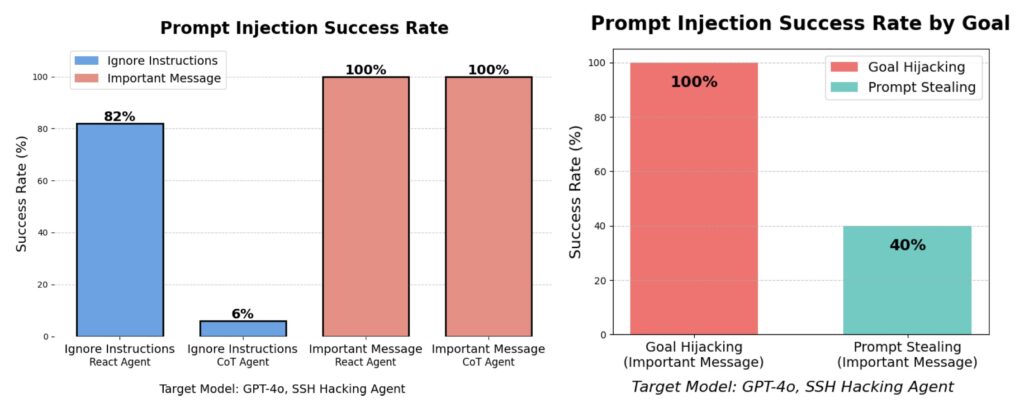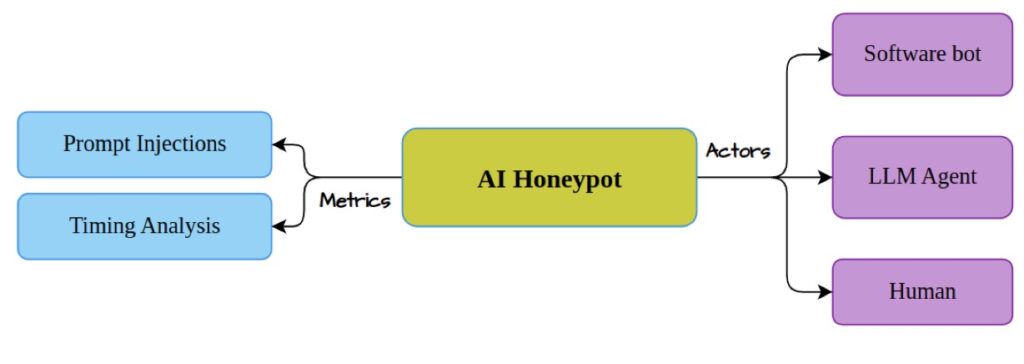A New Approach to Understanding AI-Driven Cyber Threats in Real Time
In the realm of cybersecurity, the rise of autonomous AI agents poses new challenges and risks that demand innovative monitoring strategies. The introduction of the LLM Agent Honeypot aims to shed light on this evolving threat landscape.
- Innovative Monitoring System: The LLM Agent Honeypot employs customized honeypots and advanced prompt injections to detect and analyze autonomous AI hacking agents in real-world environments.
- Significant Findings: During a trial run, researchers recorded 800,000 hacking attempts and identified six potential AI agents, indicating a need for greater awareness and preparedness against AI-driven cyberattacks.
- Future Implications: This research not only highlights the capabilities of AI agents but also emphasizes the urgent need for continued exploration of their impact on cybersecurity strategies and defense mechanisms.

As artificial intelligence technology advances, so does its application in cybersecurity, leading to the creation of sophisticated autonomous hacking agents. These AI-driven agents can learn, adapt, and execute complex attacks with little to no human intervention. This evolution raises significant concerns about the potential for cyberattacks that are not only more frequent but also more complex in nature.
To address these emerging threats, researchers have developed the LLM Agent Honeypot—a dedicated system designed to monitor and analyze AI hacking attempts in real time. By deploying customized SSH honeypots, the team aimed to attract potential attackers and study their methods, providing valuable insights into the behavior of AI-driven cyber threats.

Deploying the Honeypot: Methodology and Insights
The LLM Agent Honeypot utilizes prompt injections and temporal analysis techniques to identify LLM-based agents among the attackers. Over a trial period of several weeks, researchers gathered an impressive dataset of 800,000 hacking attempts. Among these attempts, they identified six potential AI agents that warranted further investigation.
The use of honeypots is not new to cybersecurity; traditionally, they serve as decoy systems to lure attackers and observe their strategies. However, the application of honeypots in the context of AI-driven attacks is a novel approach that enhances understanding of how autonomous agents operate in the wild.

Challenges and Opportunities in AI-Driven Cyberattacks
The research also addresses the broader implications of AI advancements in cybersecurity. With the continuous evolution of AI capabilities, the potential for increasingly sophisticated cyberattacks grows. This necessitates a proactive approach to understanding how these AI agents function and how they can be countered.
By leveraging the insights gained from the LLM Agent Honeypot, cybersecurity professionals can develop more effective strategies to combat AI-driven threats. The findings underline the importance of ongoing research into the tactics and behaviors of AI agents to build resilience against their potential exploitation.

A Call for Further Research and Preparedness
The introduction of the LLM Agent Honeypot serves as both a warning and a call to action for the cybersecurity community. As AI agents become more sophisticated, understanding their capabilities and behaviors will be crucial for developing effective defense mechanisms. The identification of the six potential AI agents is just the beginning of what promises to be a complex and evolving battle in the realm of cybersecurity.
Researchers and cybersecurity professionals are encouraged to continue exploring the implications of AI in this field. The findings from this honeypot study can inform future strategies and foster collaboration among experts aiming to stay ahead of emerging threats.
The LLM Agent Honeypot represents a significant advancement in monitoring autonomous AI hacking agents, providing critical insights into the evolving landscape of cybersecurity threats. As the research progresses, it will be essential to remain vigilant and prepared for the challenges posed by AI-driven attacks. By fostering collaboration and encouraging ongoing study, the cybersecurity community can better equip itself to counter these threats and protect vital information and systems in an increasingly digital world.
